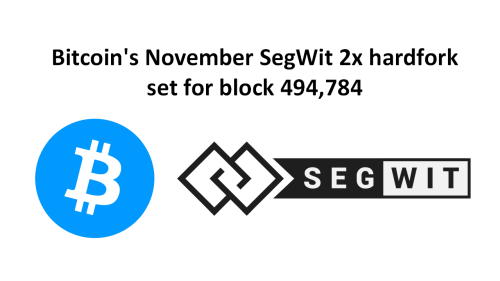Segwit2x : BitCoin Future or 'Fork'lore?
Bitcoin (world's leading digital currency) as we know is nothing but a set of code that delivers data (currency) in defined quantities (called blocks) which is stored as a sequence (called blockchain) using a huge set of distributed computers. The main USP of Bitcoin is that it's decentralized (not governed by any particular country) and a global currency. Many people around the world help the network function by running it's software and following the rules agreed by them as a community.
This November, Bitcoin is gearing up for what could be the biggest update to it's software, yet. Segwit2x (the proposed plan), calls for a very specific fork (change to operating rules) i.e. upgrading the size of the blocks passed around the network and stored in the blockchain from 1MB to 2MB.
The user community is currently divided over the risks and benefits of this form. While one side advocates that this will aid in increasing the volume handling capabilities, the others look at it as impending doom.
It's important to note how this particular fork differs from the past ones. With Bitcoin cash and gold, the changes were opaque to the users and there was no impact on their existing transactions. So basically, if you held Bitcoin in a certain exchange/wallet, then post the fork, your Bitcoins were automatically replaced. Segwit2x is a complicated fork and there is a chance your existing Bitcoins become unusable or trade-worthy, adding the element of risk to the upgrade.
Segwit2x's code is called 'BTC1'. It is an attempt to increase the block size for the sake of capacity boost. Anyone whose software is not upgraded will no longer be a part of the network (hence it's called a 'hard fork').
Historically, Bitcoin cash developers created a new blockchain (with the new rules) for the users and migrated the blocks (restoring their Bitcoins). But Segwit2x's goal is to keep the Bitcoin user's on a single blockchain. This would enforce all users to upgrade their software or risk losing their Bitcoins.
However, there is risk involved as there are two post upgrade scenarios possible:
1. The rules change is successful and all users upgrade their software. The blockchain continues to operate with larger blocks making Segwit2x's rules authoritative
2. Two Bitcoin blockchains are created because not all users upgrade their software. These would be the 'existing' blockchain with the current rules and 'new' blockchain with Segwit2x's rules. But both would be mutually exclusive and not inter-operable, leaving us with two different cryptocurrencies for Bitcoin
The second scenario is quite possible and a lot of users are not keen on the upgrade. The arguments posed by those for and against this upgrade is an interesting topic in itself.
Groups opposing the upgrade
This group is composed of the developers (due to complexity and maintainability issues) and node operators (rising storage costs as volumes of transactions will grow exponentially). They argue that Bitcoin is a store of value and not yet a payment network. They evaluate Segwit2x as risky, since if it fails or breaks transactions, then the whole Bitcoin project will fail as a whole. Moreover, the USP of Bitcoin it's decentralized nature, while Segwit2x centralizes the power and decision-making more into the hands of miners and businesses.
Groups supporting the upgrade
Primary support for the upgrade comes from the miners and startups which look at making money from larger transactions. The higher block size would enable larger volumes and in effect increase the availability and transactions involved, resulting in higher profits. They argue that Bitcoin should compete with U.S. dollar and other trading currencies, putting a priority on its use and means of exchange. Other competitor crypto-currencies are growing due to Bitcoin's inaction, effectively losing out market share and value by becoming a payment network. They complain that past conservative hard forks haven't yielded the capacity increases promised and something radical is the need of the hour.
Can the Segwit2x upgrade work?
Segwit2x uses BIP 9 activation. This means that the fork is governed by most of the miners running the new code. Miners are the ones mostly supporting Segwit2x. 1Hash, Bitfury, Bitmain, Bixin, BTC.com, BTCC, BTC.Top and ViaBTC all have signed the original agreement in May.
On paper, the plan boasts 80% of the network's miners are on-board. The Segwit2x blockchain should then very quickly accumulate the most mining power, making the existing Bitcoin unprofitable to mine and ensuring a total migration.
When will the upgrade happen?
The initial plan is on or around Nov 2016. However, an exact date can't be pinned down because the change will be enacted on a specific block (number 494,874), at which time miners will be able to run the new software. Most are confident that this will work and are going ahead with the mid-November release.










Leave a Comment